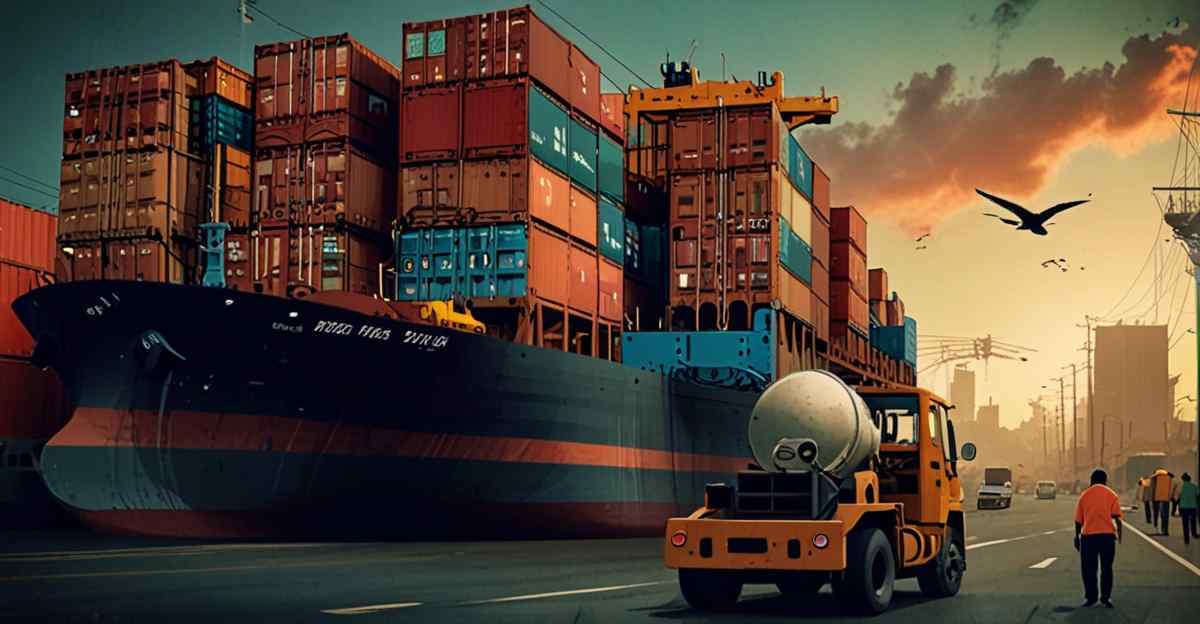How Government Initiatives Are Tackling India’s Import Dependency
Analyze the shift in India's import trends, the impact on various sectors, and the government's strategic efforts to promote local manufacturing and reduce dependence.

India’s import relationship with China has seen a dramatic rise over the past decades. In 2003-04, imports from China were $4.05 billion. By 2013-14, this figure had skyrocketed to $51.1 billion, reflecting an annual growth rate of 29%. This surge has had profound impacts on Indian industries.
Impact on Indian Industry
The influx of Chinese goods has caused major losses across Indian industries, leading to the closure of many local businesses. Sectors such as machinery, chemicals, steel, textiles, and automobiles have been hit hard.
Government Initiatives
To counter this dependence, the Modi government introduced the “Make in India” initiative and launched “Aatmanirbhar Bharat” in May 2020 during the COVID-19 pandemic. These programs aim to boost local manufacturing and self-reliance.
Change in Import Trends
During the UPA decade, Chinese imports doubled every two-and-a-half years. However, in the first six years of the Modi government, the growth rate slowed to 5.4%. Despite this, there has been an increase in imports post-May 2020 due to various reasons.
Concerns Over Continued Dependence
A report by GTRI highlights that China and Hong Kong account for 56% of India’s total imports of electronics, telecom, and other electrical products. In 2023-24, bilateral trade with China was $118.4 billion, nearly matching the $118.3 billion trade with the USA. Of this, Chinese imports constituted $101 billion, while Indian exports to China stood at $16-17 billion.
Comparative Growth Rates
Under the NDA regime, the annual growth of Chinese imports is 7.0%, compared to the 29% growth during the UPA regime. The share of Chinese imports in key sectors has risen from 21% in 2008 to 30% in 2023-24.
Sector-wise Dependence
Key industrial sectors affected by Chinese imports include machinery, chemicals, steel, plastics, textiles, and automobiles. This dependence underscores the need for increased self-reliance.
Results of Government’s Efforts
Self-Reliance Efforts
Efforts to boost self-reliance have shown promising results. In the pharmaceutical sector, the inclusion of APIs in the PLI scheme has been significant. Investments permitted by September 2023 include Rs 4,000 crore for APIs, Rs 2,000 crore for medical equipment, and Rs 3,000 crore for bulk drug parks. In 2022-23, pharmaceutical imports were Rs 25,552 crore, while exports were Rs 37,853 crore, resulting in an export surplus of Rs 12,302 crore.
Defense Sector
The defense sector has seen a notable shift from nearly 70% imports to mostly domestic production. Defense exports grew 21 times from Rs 4,312 crore (2004-05 to 2013-14) to Rs 88,319 crore (2014-15 to 2023-24). In 2023-24 alone, defense exports were approximately Rs 21,083 crore.
Industrial Production and Investment Growth
The General Index of Industrial Production (IIP) has grown by 3.8%. Although Chinese imports still contribute significantly, there have been major sectoral investment announcements:
- Automobile and Ancillary Industry: Rs 1.28 lakh crore in the last three years, six times more than the previous period.
- Electronics Industry: Rs 4 lakh crore in the last three years, 102 times more than the previous period.
- Drug and Pharma Sector: Rs 18,112 crore, 15.5 times higher than the previous period.
- Food Industry: Rs 23,484 crore, eight times higher than the previous period.
Impact of Make in India and Aatmanirbhar Bharat:
- Slower Growth of Chinese Imports: Under the Modi government, the annual growth rate of Chinese imports has slowed from 29% during the UPA regime to 7%. This indicates some level of success in reducing dependence on Chinese goods.
- Increased Self-Reliance: Initiatives like Make in India and Aatmanirbhar Bharat have led to increased investments in key sectors such as pharmaceuticals, defense, and electronics. For instance, investments in the pharmaceutical sector and defense exports have seen substantial growth, showcasing progress in self-reliance.
- Industrial Production Growth: The General Index of Industrial Production (IIP) has grown by 3.8%, reflecting positive industrial activity. Major investments in sectors like automobiles, electronics, and food industries signal a shift towards enhanced domestic production capabilities.
- Promising Signs in Specific Sectors:
- Pharmaceutical Sector: Inclusion of APIs in the PLI scheme and significant investments suggest strides towards reducing dependency on imports.
- Defense Sector: The shift from high import rates to substantial domestic production and export growth indicates significant progress.
- Electronics and Automobile Industries: Massive investment announcements reflect a push towards building domestic manufacturing strength.
Need for Harder Implementation vs. Media Grandstanding:
Despite these positive trends, the data suggests that there is still a significant reliance on Chinese imports, particularly for intermediates and components. The government’s efforts, while showing some success, may need stronger implementation to achieve more substantial results.
Key Areas for Harder Implementation:
- Deepen Sector-Specific Initiatives: While there are promising signs in sectors like pharmaceuticals and defense, other critical sectors such as machinery and textiles need more focused and robust interventions.
- Boost Local Supply Chains: Enhancing the efficiency and capacity of local supply chains can reduce the dependence on imported intermediates and components.
- Innovation and R&D: Increased investment in research and development can drive innovation and quality improvements in domestic manufacturing.
- Ease of Doing Business: Continued efforts to improve the business environment can attract more investments and encourage domestic and foreign companies to manufacture in India.
- Public-Private Partnerships: Leveraging partnerships between the government and private sector can help in pooling resources and expertise to boost domestic production.
Conclusion:
While Make in India and Aatmanirbhar Bharat have laid a strong foundation and achieved notable successes, there is a need for more rigorous and consistent implementation.
Efforts must be taken on strengthening local supply chains, fostering innovation, and creating a conducive business environment.
With better implementation, India can further reduce its dependency on Chinese imports and achieve greater self-reliance.
This calls for a balance between promoting these initiatives in the media and ensuring tangible on-ground implementation to realize the vision of a self-reliant India.
